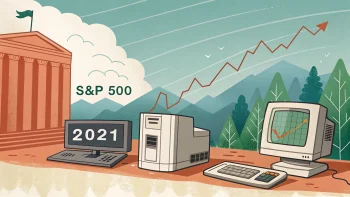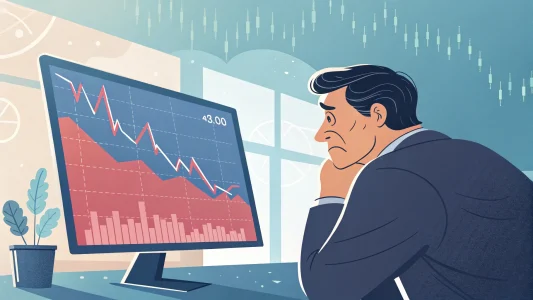The United States government faces a dire financial situation that has raised concerns about its long-term economic stability. To better understand the gravity of this issue, it’s helpful to break down the complex numbers into a relatable scenario involving two individuals. This analogy provides a clear picture of the government’s debt crisis and its potential implications for the nation’s future.
Table of Contents
ToggleThe Personal Finance Analogy
Imagine a scenario where one person representing the US government has an annual income of $100,000. This individual already owes another person, representing the bondholders, $700,000. Despite this existing debt, the first person must borrow an additional $40,000 each year for the next 30 years, promising to repay the entire amount eventually.
This situation raises an important question: Would anyone be willing to lend money under these circumstances? The answer is crucial because it mirrors the predicament the US government currently faces, albeit on a much larger scale.
View this post on Instagram
The Real Numbers: US Government Finances
To put the analogy into perspective, let’s examine the actual figures for the US government:
- Annual Income (Tax Revenue): $5,000,000,000,000 (5 trillion dollars)
- Existing Debt: $35,000,000,000,000 (35 trillion dollars)
- Annual Deficit: $2,000,000,000,000 (2 trillion dollars)
These numbers paint a stark picture of the government’s financial health—the annual tax revenue of $5 trillion dwarfs the debt of $35 trillion. Moreover, the government spends $2 trillion more yearly than it collects in taxes, further exacerbating the debt problem.
The Role of Treasury Bonds
The US government’s ability to manage this debt relies heavily on investors’ willingness to purchase Treasury bonds. These bonds are essentially loans to the government, with the promise of repayment with interest over time. The government’s “printing press”—its ability to issue new debt—only functions if there are buyers for these bonds.
However, as the debt continues to grow and the deficit persists, a critical question arises: What happens when potential buyers begin to question the viability of this financial model? The math described in the analogy and reflected in the real numbers may eventually become unattractive to investors, potentially leading to a crisis.
Potential Consequences and Concerns
If investors lose confidence in the US government’s ability to manage its debt, several serious consequences could unfold:
- Higher Interest Rates: To attract buyers, the government might need to offer higher interest rates on Treasury bonds, increasing the cost of borrowing.
- Reduced Government Spending: Higher borrowing costs could force significant cuts in government programs and services.
- Economic Slowdown: Reduced government spending and higher interest rates could lead to slower economic growth.
- Inflation: If the government prints money to cover its debts, it could lead to inflation, reducing the purchasing power of the dollar.
- Global Economic Impact: As the world’s largest economy, a US debt crisis could have far-reaching effects on the global financial system.
The Need for Preparedness
The analogy and the real numbers highlight a critical question: How is the United States preparing for a potential scenario where investors become reluctant to purchase Treasury bonds? This preparation is crucial for maintaining economic stability and preventing a potential financial crisis.
Several strategies could be considered:
- Fiscal Responsibility: Implementing measures to reduce the annual deficit and slow the growth of national debt.
- Economic Growth: Focusing on policies stimulating economic growth, potentially increasing tax revenues without raising tax rates.
- Debt Restructuring: Exploring options for managing the existing debt more effectively.
- International Cooperation: Working with other nations and financial institutions to maintain global economic stability.
The US government’s debt situation is complex and has no easy solutions. It requires careful consideration, long-term planning, and potentially difficult decisions to ensure the country’s financial stability. As citizens, it is important to stay informed about these issues and understand their potential impact on the nation’s future.
The personal finance analogy offers a simplified but powerful illustration of the US government’s challenges. It underscores the need for fiscal responsibility and proactive measures to address the growing national debt. As the situation continues to evolve, it will be crucial for policymakers, economists, and citizens alike to engage in meaningful discussions about sustainable financial practices and long-term economic strategies.
Frequently Asked Questions
Q: How does the national debt affect everyday Americans?
The national debt can impact everyday Americans in several ways. It may lead to higher interest rates, which can increase the cost of borrowing for mortgages, car loans, and credit cards. Additionally, as more of the federal budget goes towards servicing the debt, there may be less funding for public services, infrastructure, and social programs. In the long term, a high national debt could potentially slow economic growth, affecting job opportunities and wage growth.
Q: Can the US government ever pay off its entire national debt?
While it’s theoretically possible, paying off the entire national debt is highly unlikely in the foreseeable future. The focus is typically on managing the debt to keep it at a sustainable level relative to the size of the economy (GDP). The government aims to maintain a balance between borrowing to fund necessary programs and keeping the debt at a manageable level. Complete debt elimination is not necessarily the goal, as some level of national debt is considered normal for a functioning economy.
Q: What would happen if investors stopped buying US Treasury bonds?
If investors significantly reduced their purchases of US Treasury bonds, it could lead to a series of challenging economic consequences. The government might be forced to offer higher interest rates to attract buyers, increasing the cost of borrowing. This could lead to larger budget deficits, potential cuts in government spending, and slower economic growth. It might trigger a financial crisis in an extreme scenario, affecting the US and the global economy. However, it’s important to note that US Treasury bonds are still considered one of the safest investments globally, making a complete cessation of purchases unlikely under normal circumstances.

















